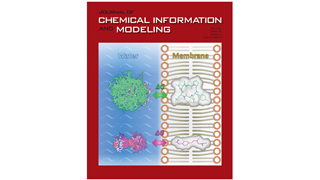Going Out on a Limb: Delineating The Effects of β-Branching, N-Methylation, and Side Chain Size on the Passive Permeability, Solubility, and Flexibility of Sanguinamide A Analogues
by Andrew T. Bockus, Joshua A. Schwochert, Cameron R. Pye, Chad E. Townsend, Vong Sok, Maria A. Bednarek, and R. Scott Lokey
It is well established that intramolecular hydrogen bonding and N-methylation play important roles in the passive permeability of cyclic peptides, but other structural features have been explored less intensively. Recent studies on the oral bioavailability of the cyclic heptapeptide sanguinamide A have raised the question of whether steric occlusion of polar groups via β-branching is an effective, yet untapped, tool in cyclic peptide permeability optimization. We report the structures of 17 sanguinamide A analogues designed to test the relative contributions of β-branching, N-methylation, and side chain size to passive membrane permeability and aqueous solubility. We demonstrate that β-branching has little effect on permeability compared to the effects of aliphatic carbon count and N-methylation of exposed NH groups. We highlight a new N-methylated analogue of sanguinamide A with a Leu substitution at position 2 that exhibits solvent-dependent flexibility and improved permeability over that of the natural product…
August 26, 2015
Journal of Medicinal Chemistry
Read online article


